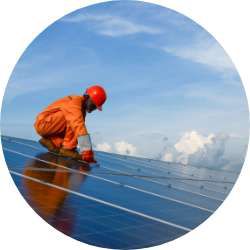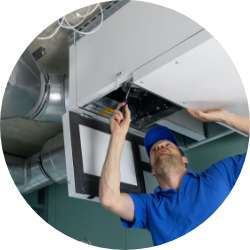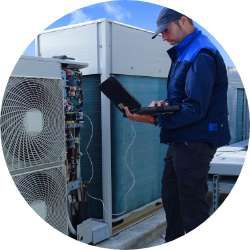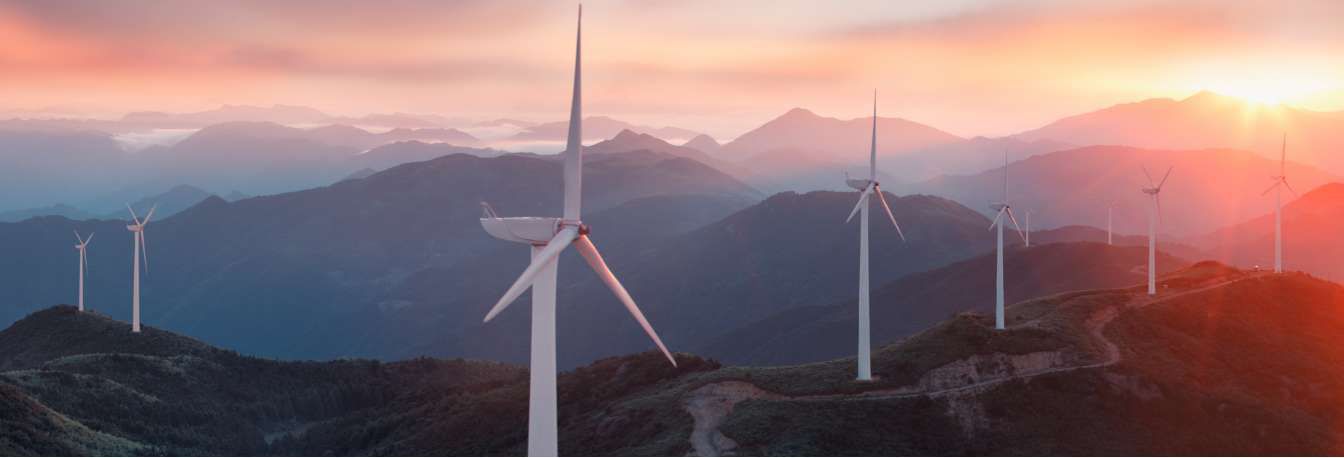Continuously improving our operational footprint
Progress towards reducing our environmental impact
We continue to strive for operational excellence and improved productivity while simultaneously reducing our environmental impact. We recognize that reducing our emissions in line with our 2030 goals will require a cultural shift and a new operational philosophy. That’s why DuPont Personal Protection is participating in an Operations Transformation work management process. This will help ensure that each site where we manufacture Tyvek® fabric, Nomex® fibers and Kevlar® fibers takes an integrated approach to achieving corporate and business climate goals. Every site will have a Site Sustainability Leader who will be responsible for creating plans for their site that will aid in decoupling carbon emission from growth while considering the site’s future needs.

Energy and emissions
The Spruance site in Richmond, VA, USA, which manufactures Tyvek® fabric, Nomex® fibers and Kevlar® fibers, underwent a conversion from coal to natural gas to produce steam and electricity more efficiently with fewer greenhouse gas (GHG) emissions. Combusting natural gas produces approximately half as many GHGs as coal combustion, which will reduce GHG emissions by more than 100,000 metric tons of CO2e (MTCO2e) annually. This carbon emission reduction is equivalent to removing 22,000 cars from the road. The project was completed near the end of 2019, and in 2020 we started to realize the resource and environmental benefits.
Implementing our Bold Energy Plan
The primary mechanism we use for reducing our energy usage to manufacture Tyvek® fabric, Nomex® fibers and Kevlar® fibers is the Bold Energy Plan, a continuous improvement program developed by DuPont and launched company-wide in 2008 to improve energy efficiency and reduce emissions at our global manufacturing locations.
As part of the Bold Energy Plan, we have undertaken the following projects at our manufacturing sites since 2016:

Energy-efficient equipment
Overhauled utility production equipment to switch to more sustainable energy resources, which facilitated significant GHG emission reductions

Heat recovery
Optimized heat recovery systems at our facilities, saving on energy and fuel

HVAC overhaul
Made improvements to heating, ventilation and air conditioning (HVAC) systems, including upgrades and part replacements

LED lighting
Retrofitted buildings with light-emitting diode (LED) lighting for greater emissions savings

We have also joined RE100, a global environmental initiative led by Climate Group in partnership with CDP, which brings together companies committed to shifting the electricity used globally in its operations to 100% renewable energy. As part of this initiative, DuPont aims to source at least 60% of its electricity from renewable energy by 2030 and achieve carbon neutrality by 2050.
In April 2022, DuPont announced that Kevlar®, Nomex® and Tyvek® – will be produced using renewable electricity in its operations. DuPont achieved this milestone by purchasing renewable energy credits (RECs) to match the energy consumed in its 2022 operations and is committed to additional purchases annually. This underscores the company's commitment to achieving its renewable energy goal and acting on climate stewardship as part of its 2030 Sustainability Goals.
We will continue to rely on the Bold Energy Plan and be a committed partner of the RE100 global initiative as we strive for even greater energy savings and additional GHG emission reductions over the coming decade.
Waste
As part of our ongoing commitment to achieving zero waste and implementing a 4R (Reduce, Reuse, Repurpose, Recycle) waste reduction program at our manufacturing sites, we established an onsite recycling facility alongside our Tyvek® manufacturing lines in Luxembourg.
The facility uses a sophisticated shredder-feeder-extruder combination system that processes all types of Tyvek® production waste and pelletizes it for reuse. This system makes it easy and efficient to reprocess post-industrial waste into HDPE granulates for reuse. As an example, the recycled HDPE granulates are used to produce plastic cores around which Tyvek® can be wound for storage and shipping. DuPont also has an ongoing partnership to give Tyvek® production waste in Richmond, VA, a second life in highly engineered water management products.
Water
Another aspect of our global footprint is to understand where and how DuPont operations interact with local watersheds. We withdraw and purchase water from various local sources and entities to conduct business. Some of that water is treated and returned to a local waterbody; some is rendered in our manufacturing processes or used for other purposes, such as employee health and hygiene. As part of our ISO 14001 certification, we continuously monitor and strive to optimize our water consumption.
To gain additional insights, we used the World Wildlife Fund (WWF) Water Risk Tool in 2020 to model water stress. The WWF tool helps us assess water risks using an expanded set of parameters, such as reputation and regulatory risk, that may affect business continuity in the future.